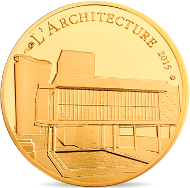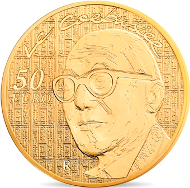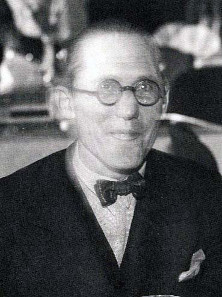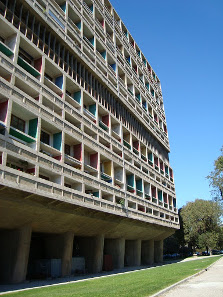September 17, 2015 – The 7 Arts series of the Monnaie de Paris has reached Year 3: the newly released issue is devoted to the famous architect Charles-Edouard Jeanneret-Gris, better known as Le Corbusier.
France / 50 Euros / Gold .920 / 8.45 g / 22 mm / Mintage: 500.
On the obverse, we can find a drawing of the Cité Radieuse built in 1952 in Marseille. Defining the house as the container of “a family”, Le Corbusier created a basic unit that is held in a structure standing on pilings. The building is adorned with a rooftop terrace that offers an exceptional 360 degree point of view.
On the reverse, we can find Le Corbusier’s portrait, recognizable by his round glasses.
Architects’ plans are drawn in the background of the coin, tribute to the art celebrated in this 2015 issue. We can also find the “RF” mention, the face value and the artist’s name.
The latest addition to the 7 Arts series comes in two different materials and denominations: as a 50 euro gold coin, and as a 10 euro version made of .900 silver.
Charles-Édouard Jeanneret-Gris, known as Le Corbusier, 1933.
Charles-Edouard Jeanneret (called Le Corbusier) was born on the 6th of October 1887 in la Chaux-de-Fonds in Switzerland. After primary school, he entered the School of Art in 1900 where he trained to be an engraver. Four years later, he entered in superior decoration course and got passionate for architecture while keeping a real interest for painting and sculpture.
Since the age of 20, he began a series of trips throughout Europe: Vienna, Paris, Lyon, and Berlin were some steps of the trip. His personality has been tailored by the meetings he did during those trips. In 1914, war broke out. He left la Chaux-de-Fond and settled in 1917 in Paris.
In 1920, he took the nickname of Le Corbusier, after one of his Albigense’s ancestors. In 1922, Le Corbusier built his first house in Paris. It formerly belonged to the French painter Amédée Ozenfant. In 1923-1924, he built the two twin houses of his cousin Pierre Jeanneret and of Raoul La Roche. He opened his agency in Rue de Sèvres with his cousin. This was the place where he worked the rest of his life.
In 1927, Le Corbusier and Pierre Jeanneret established the basis of the Modern Movement and defined the five points of a new architecture: pilings, a roof deck, an open design, a horizontal window and free design of façade.
Le Corbusier’s project Housing Unit at Marseille. Photograph: Wikipedia / Anapuig. https://creativecommons.org/licenses/by-sa/3.0/deed.en
The individual houses not meeting all Le Corbusier’s ambitions, he wanted to undertake the problem of urban planning and more particularly of collective urban settlements. He worked on several projects among which we can find the Cité Radieuse. At the end of the WWII, France needed social housing.
The state asked Le Corbusier to work on this issue, and the Housing Unit (Unité d’Habitation) project was born. Built between 1947 and 1952, the Cité Radieuse was built in the 8th district in Marseille. Most of the housing are duplex, they are jointed the one into the other in a structure standing on pilings. Connected by large corridors, the inhabitants can meet easily and have access to shops that are located within the building. First project of a series of 5 others, the Cité Radieuse is today a designated historical monument.
With the 7 Arts series, the Monnaie de Paris takes up a long-established concept that dates as far back as antiquity. According to Plato, for example, each art has iconographic features: Clio, the muse of History, can be recognized by her laurel crown, her swan and the book or roll she holds in her hand. Nowadays, the division of the arts is most commonly as follows: architecture, sculpture, drawing, dance, music, literature and poetry, and cinema.
Conforming to the series’ subtitle “An art, an artist, a place”, the two previous issues of the interesting 7 Art series of the Monnaie de Paris were thus devoted to dance (coin obverse: Rudolf Noureev, reverse: Opéra Garnier) and to music (obverse: Jean-Philippe Rameau, reverse: “Les Indes Galantes”). Future issues will feature August Rodin and Jean Gabin, among others.
For more information on this and other issues, please visit the website of the Monnaie de Paris.
A wealth of information on Le Corbusier is available on the site of the Fondation Le Corbusier.
And if you want to know what working with Le Corbusier was like, please click here.








